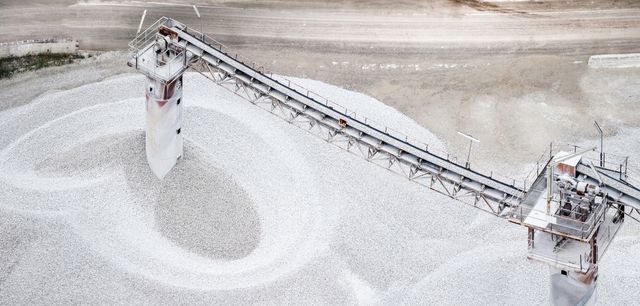13 June 2024
In a development which has been in the offing for some time but is now taking concrete shape, the German government has expressed its intention to allow the storage of CO2 under the seabed. Michael Baranowski, carbon management expert at the TÜV NORD GROUP’s HydroHub, and Silvio Konrad, Chairman of the Board of Management of TÜV NORD EnSys, explain what the draft law encompasses and what will be required to ensure the safety of the storage process.
#explore: The Federal Cabinet has adopted the cornerstones of a carbon management strategy and a draft law to amend the Carbon Dioxide Storage Act. What will change if the amendment to the law goes through the lower house of the German parliament as planned?
Michael Baranowski: The amendment to the law is intended to remove the current obstacles to Carbon Capture and Storage (CCS) and Carbon Capture and Utilisation (CCU) and to establish guiding principles for the use of these technologies. The change is intended to make it possible to store CO2 on the high seas and outside marine protected areas if the sites in question can be shown to be suitable. On land, this is not yet possible except for research purposes. However, individual federal states can actively allow storage on the territories under their jurisdiction, although this does require the enactment of the corresponding state laws. This may be of interest to federal states with CO2-intensive industries. However, it remains to be seen whether this regulation will actually be included in the law that is finally adopted.
What role can CO2 storage play in achieving climate targets?
MB: In our view, the priority should always be to avoid CO2 emissions by improving energy efficiency in all sectors and using renewable energies. We have already made great progress in this area as a whole: Who would have thought 15 years ago that we would now produce more than half of our electricity from renewables? But despite all our best efforts, greenhouse gases will continue to be produced in certain areas such as the cement and lime industry, waste incineration or parts of basic chemical processes. So, it follows that either repurposing these unavoidable emissions using carbon management instruments or storing them permanently might be an important building block in the battle against climate change.
Environmental associations have fiercely criticised the draft law, as it also opens up the possibility for gas-fired power plants to store CO2. The associations fear that power plant operators will simply choose to store carbon dioxide instead of avoiding emissions and that this will slow down the energy transition. What’s your assessment here?
Silvio Konrad: Here you must make some distinctions. The German government initially adopted a clear position on the previously decided phase-out of coal. Storing CO2 in coal-fired power plants, including combined heat and power, remains explicitly prohibited. In the case of gas-fired power plants or biomass plants, CCS is possible in the sense of a “transition to a climate-neutral electricity system without preconceptions as to the technology involved.” However, there will be no funding for it. That is why the Federal Ministry of Economics assumes – and this would also be my assessment – that CCS will play no or only a minor role in the electricity sector, as it simply offers no financial advantages for companies.
© Adobe StockThe cement industry will continue to produce unavoidable emissions. Re-utilising or permanently storing these will be an important lever in climate protection.
How can it be ensured that the companies which get funding will only store unavoidable CO2 emissions?
SK:This requires clear rules and effective monitoring by supervisory authorities and expert organisations. Emissions must be accurately quantified and verified to ensure that only unavoidable quantities are stored. To achieve this, companies will need to report transparently on their activities and document their CO₂ storage in a readily traceable way.
Let’s turn now to cost-effectiveness. CCS technology is currently still considered expensive. Is there any way for companies to use it now as things stand?
SK: The cost of CCS ranges between 70 and 250 euros per ton, which is still significantly higher than the CO2 tax or the prices of CO2 certificates. The CO2 levy in Germany is currently 45 euros per ton. At the moment, it’s still cheaper for companies to emit CO2 than to store it. Sufficient government support for industries with unavoidable carbon dioxide emissions would create an important incentive for them to make the switch. To get CCS technology off the ground in Germany, however, clear legal framework conditions must also be created quickly and bureaucratic hurdles removed. We will see significant movement in CO2 storage in Germany at the latest when the levies for CO2 emissions exceed the costs of CCS measures: on the one hand, through other politically controlled measures, such as carbon contracts for difference, which are already being used in the steel industry to offset the additional costs of climate-friendly production processes compared to conventional processes. And on the other, of course, as a result of the gradual rise in CO2 prices and a reduction in the number of CO2 certificates issued, which will in turn make CCS increasingly economical. Some European countries have already taken steps in this direction.
About Michael Baranowski:
Michael Baranowski is a project manager at the HydroHub with a focus on the import and export of hydrogen. He is also very closely involved in the carbon management issue. The HydroHub pools all hydrogen-related services and projects for the TÜV NORD GROUP in the consulting, engineering and training fields.
About Silvio Konrad:
Silvio Konrad is an energy expert and Chairman of the Management Board of TÜV NORD EnSys.
What makes a storage site suitable for CO2?
MB: Selecting a suitable storage site requires careful geological investigation. In principle, deep porous rock layers are suitable because they can absorb a lot of CO2. Above these you have to have covering strata to prevent the carbon dioxide from rising back up. Suitable sites include exhausted natural gas or oil fields or saline aquifers, i.e. rocks whose pore space is filled with salt water. In the case of storage on land, these must not be located near drinking water sources to rule out the salinisation of groundwater, soils and surface waters.
How should the CO2 be transported to these storage facilities?
MB: Smaller quantities can be transported by lorry or rail. However, the central element will be a pipeline network, the development of which will be made possible by the German government’s legislative proposal. Our colleagues from DMT, for example, are supporting a pipeline project of this kind in North America and have already garnered some relevant experience in this field.
How dangerous is CO2 or CCS technology?
SK: CO2 is basically an easily controllable medium. It is non-flammable and only harmful to health when highly concentrated. As with any other gas, there is a risk of leakage during transport and storage. In our view, this risk can be controlled with particular specifications for the selection of means of transport and storage sites, making sure these are very well sealed, and monitoring transport and operation very closely. To minimise the risk as far as possible, strict safety standards must be met in CCS projects. Since CO2 storage is not yet being operated commercially on a large scale, these projects should be closely monitored by experts. Further research and experience gained, for example in projects abroad, will help improve the technology still more.






